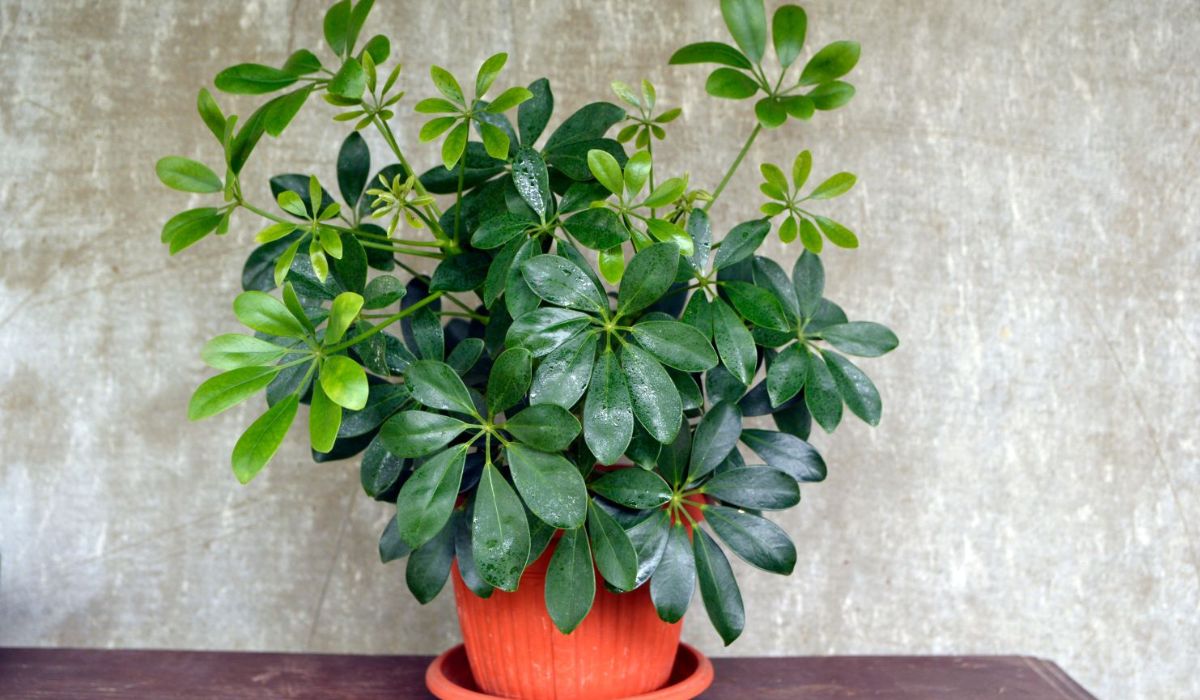The umbrella plant is one of the most sought-after houseplants due to the rising popularity of indoor gardening. The umbrella plant (Schefflera arboricola) has become a favorite of green thumbs everywhere thanks to its aesthetically pleasing leaves and beneficial effects on indoor air quality. In this post, we’ll learn about the history and maintenance of the umbrella plant, as well as its medicinal uses and any risks it may provide. Let’s just jump right in!
Origin and Appearance
The Araliaceae family includes the umbrella plant that is native to Taiwan and China’s Hainan Island. This evergreen shrub gets its name from the way its glossy, leathery leaves fan out from a central stem, creating the illusion of an umbrella. When given adequate care, the plant’s height can reach six feet.
Popular Varieties
There are many different types of umbrella plants available, each with its own set of leaves in a different color and size. Among the most typical are:
Schefflera Arboricola ‘Green’: Because of its lush green foliage, this traditional cultivar is a great pick for purists.
Schefflera Arboricola ‘Gold Capella’: The green and yellow variegation of the ‘Gold Capella’ variety’s foliage makes it stand out and gives any room a sophisticated air.
Schefflera Arboricola ‘Trinette’: The ‘Trinette’ is a popular houseplant due to the vibrant and cheery effect its variegated leaves of cream, green, and pink have on their surroundings.
The Perfect Spot for Your Umbrella Plant
Light Requirements
Umbrella plants require indirect, high-light conditions to flourish. It’s best to put them near a window that gets indirect sunlight. But prolonged exposure to direct sunshine, which can scorch their leaves, should be avoided.
Temperature and Humidity
These plants thrive in temperatures between 65 and 75 degrees Fahrenheit (18 and 24 degrees Celsius). They thrive in moist conditions, therefore a humidifier or a tray of water placed nearby is recommended.
Watering and Soil
Watering: Umbrella plants thrive in regularly moist soil but cannot tolerate standing in water. Do not irrigate the soil below an inch deep.
Soil Mix: Umbrella plants do best in a well-draining potting mix that includes peat moss, perlite, and sand. Root rot can be avoided and healthy growth is guaranteed with adequate drainage.
Pruning and Propagation
Pruning: Pruning the umbrella plant on a regular basis keeps it in good condition and promotes new growth. Remove any long, straggly stems and pinch back the tips to promote fullness.
Propagation: Stem cuttings are an effective method of propagation. Using moist soil in a pot, plant a six-inch clipping taken from a healthy stem. Put the container somewhere warm with indirect light so the plant may grow roots.
Health Benefits of the Umbrella Plant
The umbrella plant is more than just a pretty sight: it also has useful medicinal properties.
Air Purification
Umbrella plants are great for cleaning the air inside your home of harmful chemicals like formaldehyde and benzene.
Stress Reduction
The presence of houseplants, like the umbrella plant, has been linked to better mental and physical health.
Potential Challenges
Even though the umbrella plant is simple to maintain, problems might occur:
Pests: Pests like spider mites and aphids can quickly overtake a plant if you don’t take action.
Leaf Drop: Overwatering, underwatering, or extreme shifts in weather can all cause a plant’s leaves to fall off prematurely.
Conclusion
The umbrella plant is an attractive and useful addition to any houseplant collection. It is an excellent option for both novice and experienced gardeners due to its luxuriant leaves, air-purifying characteristics, and low maintenance requirements. If you give it enough water, sunlight, and occasional pruning, it should last for years.
FAQs
Can the umbrella plant withstand low light conditions?
While indirect, strong light is ideal, lower light levels are also acceptable.
Is the umbrella plant safe for pets?
The umbrella plant is poisonous to animals and should not be fed to pets. Don’t let them get their hands on it.
How often should I fertilize my umbrella plants?
During the spring and summer growing seasons, use a balanced liquid fertilizer every two to four weeks.
Can I place my umbrella plant outdoors during summer?
Yes, but make sure it’s not in direct sunshine by placing it under some sort of shade.
Should I mist my umbrella plant’s leaves?
To prevent fungal problems, misting should be done away from the leaves rather than on them.











